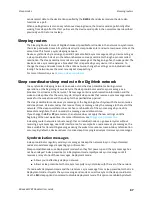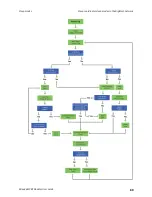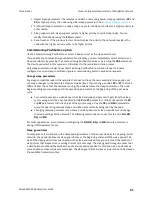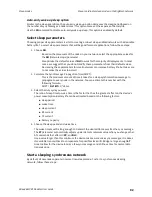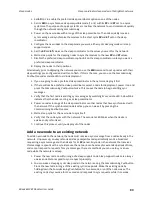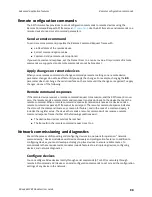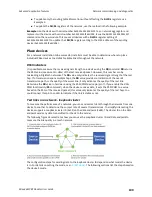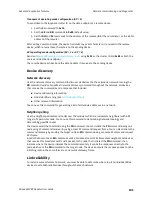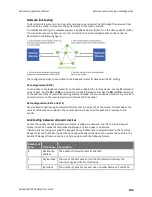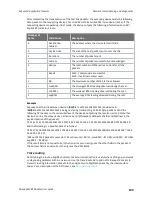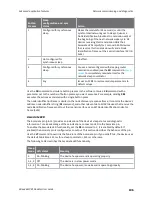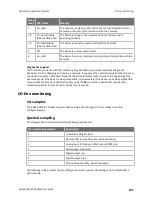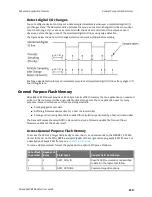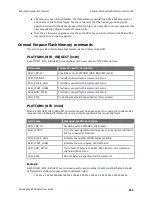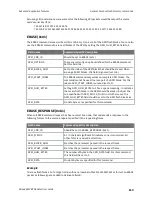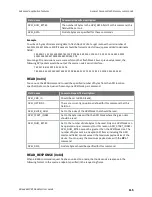
Advanced application features
Network commissioning and diagnostics
XBee 868LP RF Modules User Guide
100
n
To update only the routing table information without affecting the
DH
/
DL
registers, use
Example 2.
n
To update the
DH
/
DL
registers of the network, use the method in the following example.
Example
: Use the device with serial number 0x0013a2004052c507 as a network aggregator and
replace it with a device with serial number 0x0013a200f5e4d3b2. Issue the AG0013a2004052c507
command on the new module. This causes all devices with a
DH
/
DL
register setting of
0x0013a2004052c507 to update their
DH
/
DL
register setting to the MAC address of the sending
device (0x0013a200f5e4d3b2).
Place devices
For a network installation to be successful, installers must be able to determine where to place
individual XBee devices to establish reliable links throughout the network.
RSSI indicators
It is possible to measure the received signal strength on a device using the
DB
command.
DB
returns
the RSSI value (measured in -dBm) of the last received packet. However, this number can be
misleading in DigiMesh networks. The
DB
value only indicates the received signal strength of the last
hop. If a transmission spans multiple hops, the
DB
value provides no indication of the overall
transmission path, or the quality of the worst link; it only indicates the quality of the last link.
Determine the
DB
value in hardware using the RSSI/PWM device pin (pin 7). If you enable the RSSI
PWM functionality (
P0
command), when the device receives data, it sets the RSSI PWM to a value
based on the RSSI of the received packet (this value only indicates the quality of the last hop). You
could connect this pin to an LED to indicate if the link is stable or not.
Test links in a network - loopback cluster
To measure the performance of a network, you can send unicast data through the network from one
device to another to determine the success rate of several transmissions. To simplify link testing, the
devices support a Loopback cluster ID (0x12) on the data endpoint (0xE8). The cluster ID on the data
endpoint sends any data transmitted to it back to the sender.
The following figure demonstrates how you can use the Loopback cluster ID and data endpoint to
measure the link quality in a mesh network.
The configuration steps for sending data to the loopback cluster ID depend on what mode the device
is in. For details on setting the mode, see
. The following sections list the steps based on
the device's mode.


